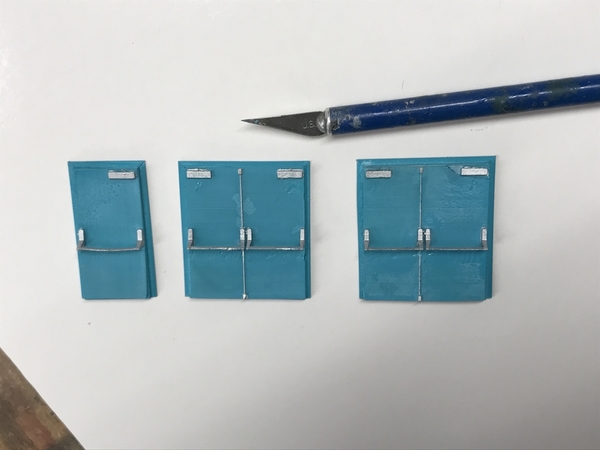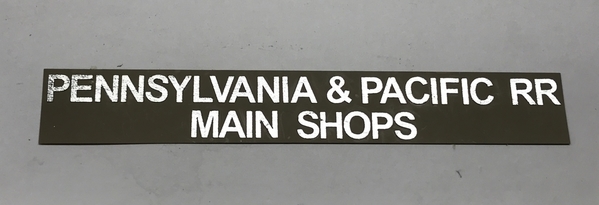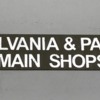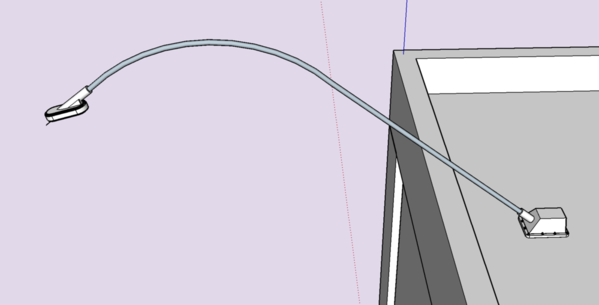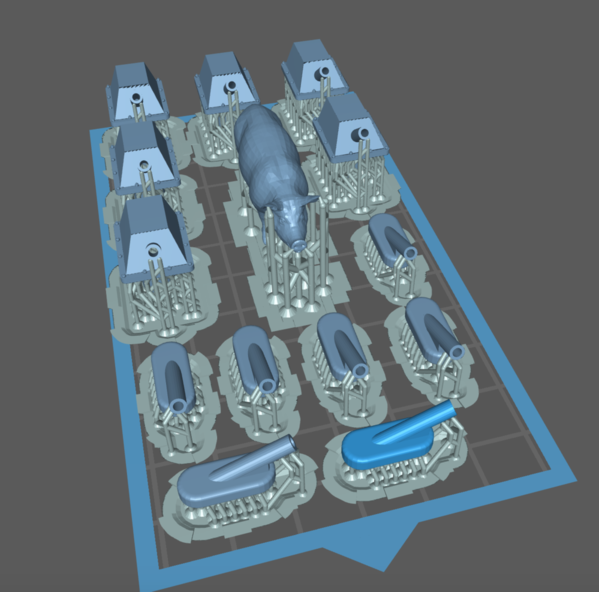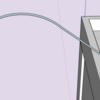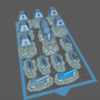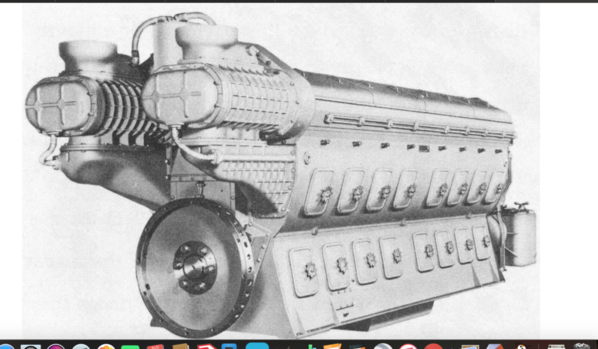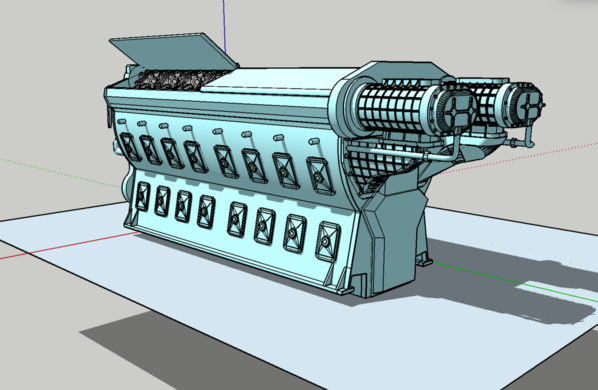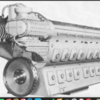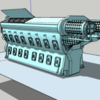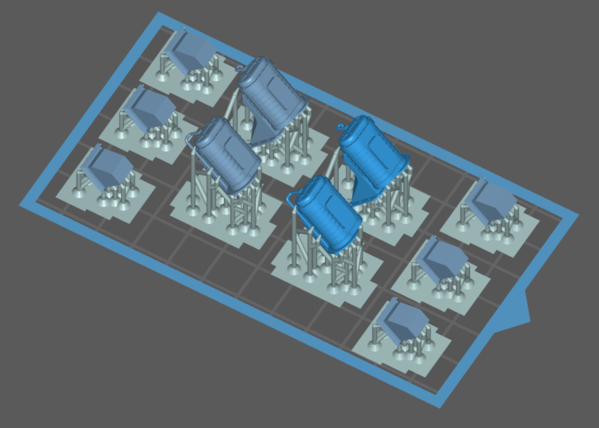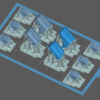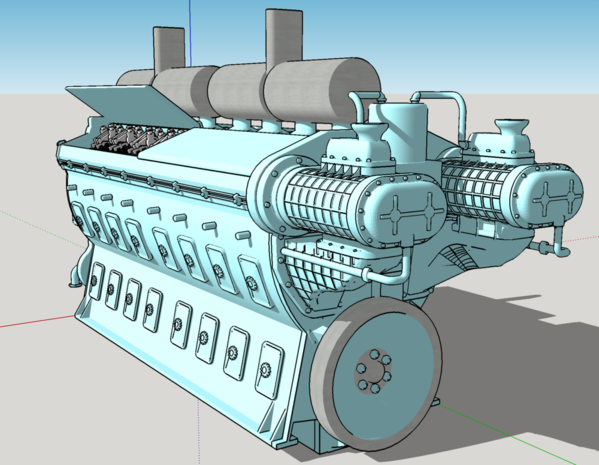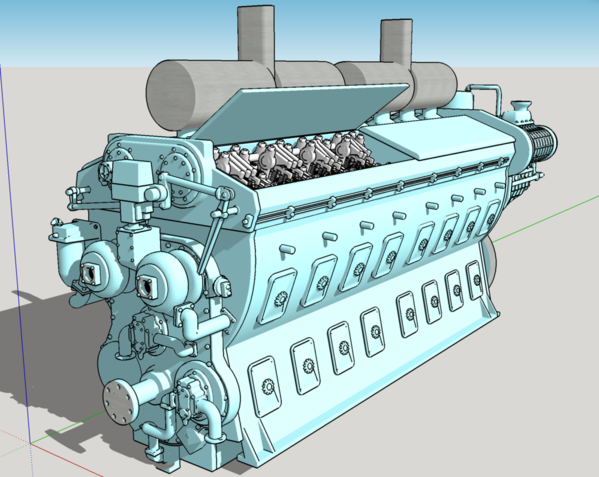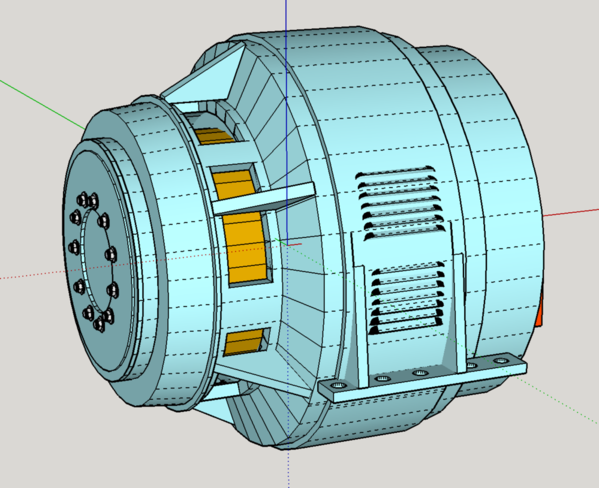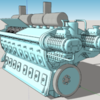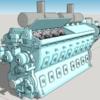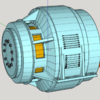That's what made me think of your possibility too...
I wrote a post last night, but was interrupted by #2 grandson with a diorama project. It's that time of the year again. My post timed out and I lost most of the pictures. It was too late to start over so tonight is a two-for.
I got the filler strips weathered and installed. I finished the P&P RR signage for the Engine House (EH) and today installed it. Grew some more machine tools. Made scale-looking personnel doors. Then I helped grandson design a model of an Irish house where the author of Angela's Ashes lived. I had some styrene furnishing, but we needed to find more on SU and make them on the Machine. I spent this morning drawing up plans for him and correcting some printing errors.
The filler strips are in and look decent. I added more grease stains since this is the part that's under the engines. Of course I ran into a minor complication. There are feeder wires soldered to the siding tracks now in the EH. I didn't realize how much they interfered until I was in the process of hot gluing the strips in place and there were these large bumps that pushed the filler above the tops of the power rail. I had to take them into the shop and grind relief into the undersides of the MDF and actually remove some of the styrene packing. Meanwhile, hot glue is annoying! It often cooled too much before I got the strip situated and I had to scrape all the hardened glue off the ties and start over. This only happened in two out of the six strips. After gluing down the strips, I put the EH back on it moorings and permanently fastened the bumpers in place with the contact adhesive strips. I tested them and it holds like crazy.
I was going to just grow some crash bars hardware for my personnel doors, but when I looked at the SU doors that I had downloaded they were complete with crash bars, door closures, outside handles… the works. I decided to grow them and see how they would turn out.
They grew well, but they're very thin and warped like crazy making them unusable. Or so I thought. The door closures, even though I doubled their thickness, were too thin to survive very long. The warpage was awful
I thought about cutting away the crash bars and just using them, but they too wouldn't have survived the mayhem. So I tried laminating these doors to the inside of my scratch-built ones. The dimensions were dead on. The printer prints accurately.
I had to clamp them to straighten them out a bit, but even so they were still a bit warped. But it worked. After painting, they look remarkably real. The crash bars on one double door cracked, but I was able to mend them with Bondic. If you're going to do resin printing, make sure you get Bondic too.
Here's a door sitting in a machine shop wall. Even without those microscopic closure arms, the door works!
I first tried to pad paint the signage with gloss black, but the sponge pad I was using was too soft and was contacting the base surface also. I went to Plan B: using Bare Metal adhesive backed aluminum. It was time consuming, but rewarding. I use the technique suggested on the instructions: you carefully lift a lip of the foil off the backing and then fasten this to a slip of paper. You go to the other side of the piece you're using and do the same. You then lift the foil off the backing with these strips.
If you're foolhardy enough to try to just lift the foil with a tweezers, it will be immediately curl back on itself and generally ends up in a mess. Using the paper gives good control and lets you carry the foil to where it's needed. At first I was burnishing the foil down hard and then trimming with a new #11 blade. This made it difficult to almost impossible to remove the scrap, and I was scratching the base color. I modified my approach to just putting the foil in place and fastening it to the letter's top only so I could clearly see the outline. After trimming I went back with a Q-tip and burnished down the edges. The results were gratifying.
Today, I marked out the EH and, using 3M99 high strength spray adhesive, I affixed the signage to the building.
I'm designing the exterior lighting. I'm going to have three units mounted to the roof directed at each door. This will also serve to illuminate the signage. I also want lighting over each personnel door. I'm going to grow the fixtures to specifically accommodate the surface mount LEDs that I'm using so much. I also bought two 12 VDC 30 watt units that will be most capable of powering whatever lighting is going to be at that end. I bought two since I'll need more for other uses as well.
And… the ultrasonic cleaner (USC) arrived yesterday and immediately went to work. I now have a fully equipped resin printing work station. The unit is noisy, but it works great. I cleaned my air brush and it worked well. I also cleaned my watch band and it was filthy. I cleaned everything the Machine put out. I'm still using the two-alcohol baths, but for shorter time. I then run it through the USC for about 6 minutes. The unit has temperature and time controls.
I put some aluminum screen in the main basket so little parts don't fall through.
I'm getting itchy to finally build the gantry. All my ducks are lined up in a row. My older grandson visited us yesterday after coming back from being the sailing counselor at his sleep away camp in Wisconsin. He started University of Illinois next week. He immediately said that I should have mechanized the crane and then suggest that I could rig up a cable system to at least drag it back and forth. I think that train has left the station. If I was to do that, it would have had to be before the girders were epoxied in place.
Just for your edification, here's all the little bits that we grew for grandson's diorama. We grew a bed and table, but they seemed to large for the floor space, so I shrunk them a bit and dit it over. The wood stove in the foreground was a disaster. I had to redraw a lot of it so it would work and I enlarged it a bit since it was just too small to be noticed. We were able to download some 3D people STLs and they printed beautifully. I also found that I can orbit around the images in the slicer by using the two-finger track pad move on my MacBook Pro. Not the easiest of moves, but I was getting frustrating by only looking the top-front-and left side of the objects. I also designed an printed a set of stairs to make the build go faster. He has to have it done by mid-week.




